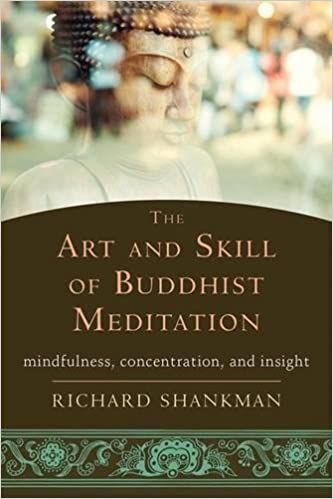Richard Shankman – The Art and Skill of Buddhist Meditation Audiobook
Richard Shankman – The Art and Skill of Buddhist Meditation Audiobook (Mindfulness, Concentration, and Insight)

Richard Shankman’s Art and Skill of Buddhist Meditation is a piece of a rising pattern in Buddhist contemplation in the West that exhibits a coordinated way of reflection rehearse, one that unites care, profound thoughtful stillness (samadhi, now and again deciphered as “focus”), and freeing understanding. In many practice conventions in both East and West, these three streams have turned out to be isolated into schools or customs, each of them frequently isolated from the others. The Art and Skill of Buddhist Meditation Free Online. In this volume of reasonable direction, Shankman prevails at reintegrating the Buddha’s way of training in a way that can profit meditators at all phases of improvement.
The book is composed in a simple and charming style that catches Shankman’s talked voice and passes on his uncommon way to deal with one-on-one and gathering training of meditators. Shankman uncovers himself here to be a delicate and mindful guide, one extremely sensitive to the immense assortment of individual involvement in reflection. He gives learned help to various methods for pondering, with a reliable accentuation on finding the incorporated practice that works for you and on doing “as well as can be expected” in all conditions. Richard Shankman – The Art and Skill of Buddhist Meditation Audiobook Download.
All through the book, Shankman takes the view from inside the thinking mind—a bizarre point of view in a field of books that tend to concentrate on ideas and depictions all things considered. Shankman’s viewpoint makes his book significant for understanding the full cluster of encounters that can emerge in reflection, how to comprehend them, and how to work beneficially when they emerge. Shankman is likewise one of the not very many creators overcome enough to really discuss what samadhi (and the related jhana states) really feel and resemble; in doing as such, he demystifies and standardizes encounters that have very frequently been made out to be uncommon, rarified, and secretive. Doing as such is vital on the grounds that, as Shankman appears, the gathered and still personality, a characteristic limit of mind that we as a whole offer, is a rich field for profound understanding.
The book is refreshingly free of language and adeptly avoids the partisanship and animosity that have now and again portrayed talks of the different streams of training that are skillfully mixed here. Shankman doesn’t investigate the captivating history of how the incorporated way of training laid out in the Pali group, the most punctual record of the Buddhist lessons, wound up noticeably partitioned into independent practices in nineteenth century Burma and the twentieth century West. In any case, that history is currently very much secured somewhere else: Shankman keeps the emphasis on the down to earth issues that stand up to meditators in day by day rehearse.
I very prescribe this book to all meditators, however especially to the individuals who get themselves befuddled by the changed, now and then clashing, directions or direction that they have gotten from instructors about the significance of concentrating on care to the rejection of samadhi, samadhi to the prohibition of care, or understanding to the avoidance of both. This book can genuinely enable you to sidestep all that pointless “brush of perspectives” and develop your contemplation hone in a coordinated way that suits your disposition and the substances of your every day life.